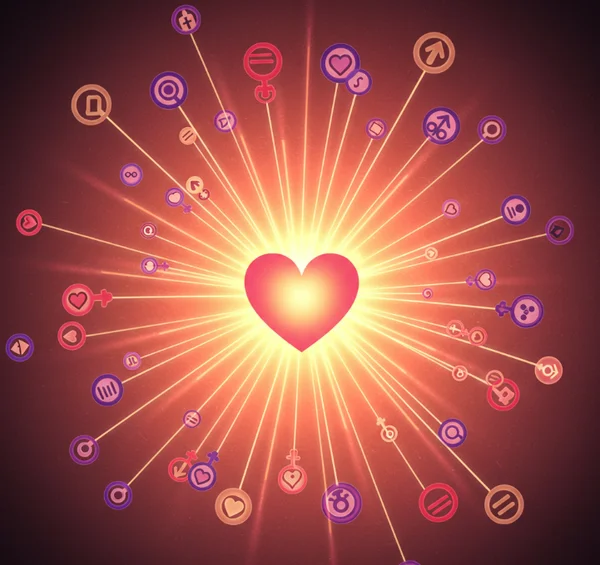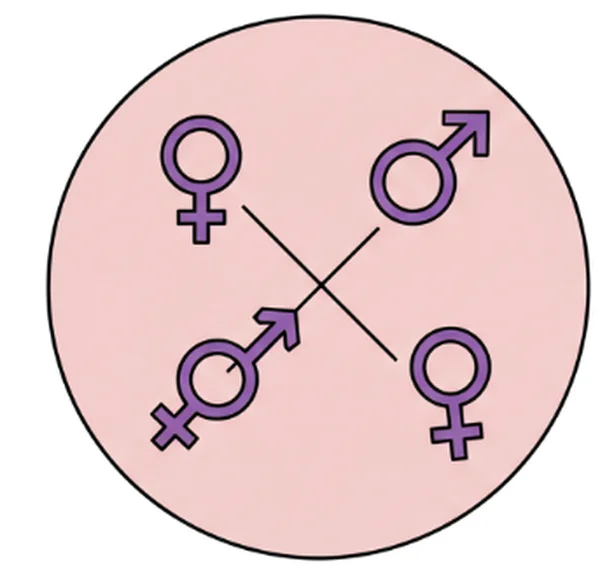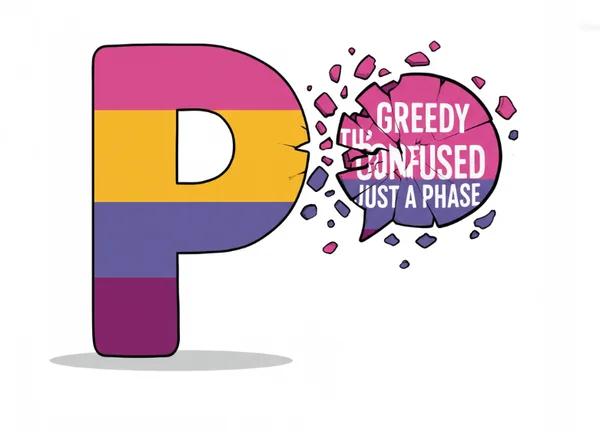Pansexuality Explained: Attraction Beyond Gender Identity
Understanding Pansexual Meaning & Its Place in LGBTQ+ Terms
The landscape of sexual orientation is rich and ever-evolving, offering a beautiful tapestry of human experience. As our collective understanding deepens, so too does the language we use to describe these diverse attractions. You may have encountered the term "pansexual" in conversations or online and found yourself wondering, what is pansexuality exactly? Perhaps you're trying to differentiate between pansexual vs bisexual identities, or maybe you're on a personal journey of identity exploration where tools like a gay quiz can offer initial points for reflection. This article is dedicated to providing a comprehensive and clear explanation of the pansexual meaning, delving into its core principle of attraction regardless of gender, and discussing its significant and valued place within the expansive array of LGBTQ terms. Understanding diverse orientations like pansexuality can be part of a broader self-discovery process, and resources like those at GayQuiz.org aim to support that exploration with tools like our sexuality quiz.
What is Pansexuality? A Clear Definition
So, let's begin with the fundamental question: what is pansexuality? In its most widely accepted definition, pansexuality describes a sexual orientation where an individual experiences emotional, romantic, or sexual attraction to people of all gender identities and expressions. This means a pansexual person's potential for attraction is not confined by traditional binary notions of gender, nor is it limited to any specific set of genders. Understanding such definitions can be helpful even if you initially came looking for a gay quiz, as it broadens the perspective on attraction.
Attraction Regardless of Gender: The Core Concept
The absolute cornerstone of pansexuality explained lies in this pivotal phrase: attraction regardless of gender. This isn't to say that pansexual individuals don't see gender; rather, gender is not a determining factor or barrier in their attraction to someone. They might be drawn to men, women, transgender individuals, non-binary people, genderfluid individuals, agender people, and those whose gender expression or gender identity falls anywhere else on or beyond the spectrum. The focus is on the individual person—their personality, their connection, their essence—rather than their gender fitting a specific criterion. The sex assigned at birth is similarly not a limiting factor in their potential for attraction. For someone exploring their feelings, perhaps even starting with an "am I gay quiz," learning about pansexuality can offer another lens through which to understand their own experiences of attraction.

Beyond the Binary: Embracing All Genders
Pansexuality, by its very nature, moves decisively beyond binary constructs of gender (i.e., solely male or female). It inherently acknowledges, validates, and embraces the existence of all genders. This inclusive stance is a defining characteristic and a crucial aspect of the pansexual meaning. It reflects a worldview where attraction is not predicated on a person fitting into one of two boxes but can extend to the full, beautiful spectrum of human gender identity. This understanding enriches the context for anyone undertaking a sexuality quiz to explore their own attractions.
Pansexual vs. Bisexual: Understanding the Key Differences
One of the most frequent points of discussion, and sometimes confusion, is the relationship between pansexual vs bisexual identities. Is pansexual the same as bisexual? While they share common ground in describing attraction to more than one gender, and some individuals may find both terms resonate with them, there are important nuances and distinctions that many people find meaningful. Clarifying these terms can be helpful for anyone on a journey of identity exploration, perhaps even prompted by taking a general gay test.
Historical Context and Evolving Language in LGBTQ Terms
Understanding the historical context and the evolving language within LGBTQ terms is vital here. The term "bisexual" has a longer and more established history in LGBTQ+ advocacy and typically has been understood as attraction to both men and women (or, more broadly, to genders similar to and different from one's own). As societal and academic understanding of gender expanded beyond a strict binary, the term "pansexual" gained prominence for some individuals. They felt "pansexual" more explicitly and unequivocally encompassed attraction to people of all gender identities, including those who are non-binary, genderfluid, or otherwise outside the traditional gender binary. This evolution is part of the ongoing refinement of language within LGBTQ+ history to better reflect lived experiences.
Focus of Attraction: Gender as a Factor vs. Gender Irrelevance
A common way to articulate the difference lies in the focus of attraction. Bisexuality is often defined as attraction to more than one gender, or attraction to at least two genders. For some bisexual individuals, gender may still be a noticeable component of their attraction, even if they are attracted to multiple genders. For example, someone might be attracted to men in one way and women in another, with gender being a part of that distinct experience.
Pansexuality, conversely, often emphasizes that gender is not a factor in their attraction; it's about the individual person, their qualities, and the connection formed. This is sometimes described as being "gender-blind" in attraction, meaning the specific gender identity or gender expression of a person doesn't determine whether attraction is possible. However, it's crucial to note that many bisexual people also feel their attraction is not limited to just two specific genders and may also be attracted to non-binary individuals. The key is how an individual chooses to define their own experience, and tools like a sexuality quiz can help begin that reflection.

Can Someone Identify as Both? Overlapping Identities and Personal Choice
Absolutely. Self-identification is the ultimate authority when it comes to sexual orientation and identity. Some individuals find that both "bisexual" and "pansexual" accurately describe aspects of their attractions and experiences. They might use the terms interchangeably, prefer one over the other in different contexts, or identify as "bi/pan." These overlapping identities are valid and highlight the deeply personal choice involved in selecting the language that best articulates one's internal reality. There's no "correct" way to label these experiences; it's about what feels most authentic to the individual. Whether you start with a gay quiz or are exploring other labels, the journey is yours.
Pansexuality Within the LGBTQ+ Spectrum and Common Misconceptions
To fully grasp what is pansexuality, it's important to situate it within the broader LGBTQ+ spectrum and actively address common misconceptions that can cause harm and misunderstanding. Pansexuality is a valid identity that enriches the diversity of human attraction, and understanding it is part of a comprehensive approach to sexuality that our resources, including our gay quiz platform, aim to support.
Is Pansexuality "Greedy," "Confused," or Just a Trend? Debunking Myths
Unfortunately, like many non-monosexual identities, pansexuality is sometimes subjected to harmful myths and stereotypes. Accusations of being "indecisive," "greedy," "just confused," or "following a trend" are forms of panphobia (similar to biphobia) and are deeply invalidating. Debunking myths is essential. Pansexuality is not a phase or a sign of indecision; it's a distinct and legitimate sexual orientation for many people.

The Significance of the "P" in LGBTQIAP+ and Other Acronyms
You may encounter various expansions of the LGBTQ acronym, such as LGBTQIAP+ (Lesbian, Gay, Bisexual, Transgender, Queer/Questioning, Intersex, Asexual/Aromantic/Agender, Pansexual, and more). The inclusion of "P" for pansexual within these LGBTQ terms signifies its recognition as a distinct identity within the community and acknowledges the importance of its specific experiences and representation.
Visibility and Representation for Pansexual Individuals
Like all marginalized groups, increased visibility and authentic, positive representation for pansexual individuals in media, society, and within LGBTQ+ spaces themselves are incredibly important. When the pansexual community is seen, heard, and understood, it helps to combat harmful stereotypes, provides validation for those who identify as pansexual, and educates the wider public. This broader education complements the individual journey one might start with a sexuality quiz.
Exploring if Pansexuality Resonates: Signs and Self-Reflection
If this discussion on pansexuality explained is making you wonder, "Am I pansexual quiz?" or if the definition feels like it might fit your experiences, self-reflection is a valuable next step. What are some signs you might be pansexual? While there's no checklist, consider your own patterns of attraction. Our platform, GayQuiz.org, offers tools that can aid this kind of introspection, even if you begin with our general gay quiz.
Questions to Ask Yourself About Your Attractions
Some self-reflection questions to consider:
- When I think about who I'm attracted to, does a person's gender play a significant role, or do I find myself drawn to their personality, humor, intelligence, kindness, or other qualities first and foremost?
- Am I open to the idea of forming romantic or sexual relationships with people of various gender identities, including those who are non-binary, genderfluid, agender, or transgender?
- Do my past or current attraction patterns seem to defy limitation to one or two specific genders?
- Does the idea of attraction regardless of gender feel liberating or accurately descriptive of my potential attractions?
How a Sexuality Quiz Might Offer Insights
While no online quiz can define you, tools like a general sexuality quiz or even our foundational gay quiz (such as the one offered at GayQuiz.org) can serve as prompts for deeper thought. They can help you consider different scenarios and reflect on your responses. While a specifically designed "pansexual quiz" might offer more tailored questions, the process of engaging with any well-structured quiz can spark valuable self-reflection and help you explore how the pansexual meaning aligns with your own feelings, or how other labels might fit.

Embracing Your Understanding: Pansexuality and Identity
Learning about pansexuality explained and what it means to have attraction regardless of gender can be a deeply affirming experience, whether it helps you understand your own identity better or fosters greater empathy for the diverse experiences of others. Embracing this knowledge contributes to a more inclusive and understanding world for everyone on the LGBTQ+ spectrum. This journey of understanding can often start with simple questions and tools like a gay quiz.
In essence, pansexuality explained simply means an attraction to people regardless of their gender. It’s a beautiful and valid part of the diverse LGBTQ+ spectrum. Understanding what is pansexuality and how it differs from or relates to terms like bisexuality helps us all appreciate the richness of human sexual orientation. Whether this pansexual meaning resonates with your personal identity or simply broadens your understanding of LGBTQ terms, we hope this explanation has been helpful. Are you on a journey of identity exploration? Our online sexuality quiz may offer a space for reflection. What are your thoughts on the importance of diverse labels in understanding sexuality, perhaps after taking a gay test or exploring other resources? We invite you to share your perspectives respectfully in the comments below.
Common Questions About Pansexuality Explained
To further clarify what is pansexuality, here are answers to some frequently asked questions. Understanding these can be part of your broader identity exploration, which might even involve starting with a gay quiz to understand your initial feelings.
-
What's the main difference between pansexual and omnisexual?
Both pansexuality and omnisexuality describe attraction to people of all genders. A commonly cited distinction is that pansexual individuals may experience attraction regardless of gender (gender isn't a factor, or they are "gender-blind"), while omnisexual individuals are attracted to all genders but may still recognize and experience gender as a factor in their attraction to specific people. However, self-identification is always paramount, and the lines can be personal.
-
Can a straight person later identify as pansexual?
Sexual orientation can be fluid for some, and self-discovery is an ongoing process. Someone who previously identified as straight might, through further identity exploration and understanding (perhaps even aided by exploring tools like a sexuality quiz), realize that "pansexual" more accurately describes their experience of attraction regardless of gender.
-
Is pansexuality a "new" term or identity?
While the term "pansexual" has gained more widespread public visibility and usage in recent decades, particularly with increased internet access and community building, its conceptual roots and usage within some academic and activist circles date back further into LGBTQ+ history. The language we use to describe sexual orientation is constantly evolving to better capture diverse human experiences.
-
How do I explain pansexuality to someone who doesn't understand?
A simple way is to say: "Pansexuality means I have the potential to be attracted to people of any gender. For me, it's more about the person themselves—their personality, our connection—than what their gender is." You can emphasize the "attraction to the person, not the gender" aspect. Patience and clear, simple language are often helpful.
-
Are there specific flags or symbols for pansexuality?
Yes, the pansexual pride flag is well-recognized within the pansexual community and the broader LGBTQ+ spectrum. It consists of three horizontal stripes: pink (representing attraction to women), yellow (representing attraction to all genders including non-binary, genderfluid, and agender individuals), and blue (representing attraction to men). This flag is an important symbol of identity and representation.